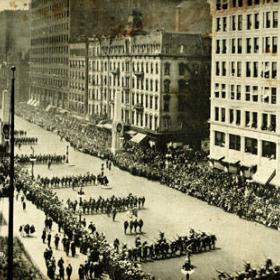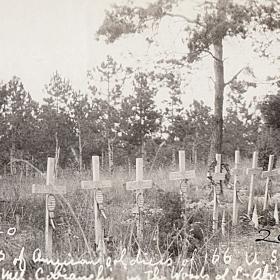World War I American Cemeteries in Europe
Following World War I, the United States government recognized a need for a burial and repatriation policy for America’s war dead. Over the course of the conflict, more than 116,000 Americans lost their lives in Europe. Under provisions of the law, families of the dead were entitled to select permanent interment of a loved one’s remains in an American military cemetery on foreign soil or repatriation of the remains to the United States for interment in a national or private cemetery. The majority of families chose repatriation. Approximately 30 percent, however, chose permanent interment in Europe.
The eight cemeteries created to inter American soldiers who gave their lives during World War I are scattered throughout France, Belgium, and England. The Meuse-Argonne American Cemetery in France is the largest American military cemetery in Europe with 14,246 graves, dwarfing World War II’s Normandy American Cemetery and Memorial’s 9,387 graves by 4,859. Perhaps it is only by standing within these World War I burial grounds that one can understand the true cost of war.
In 1923, the United States Congress created the American Battles Monuments Commission (ABMC) to honor American armed forces where they had served overseas and to control military cemeteries, monuments and markers on foreign soil. General John J. Pershing served as the first chairman of the ABMC’s Board of Commissioners from its founding until his death in 1948. Pershing personally oversaw the construction of all the World War I cemeteries and monuments.

